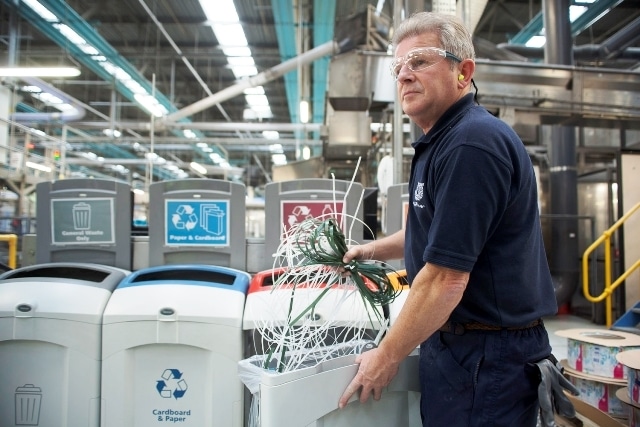Leading the charge to zero waste
Around the world, organisations are working to inspire the business community to embrace opportunities in the green economy. One of these philosophies - zero waste – is currently doing just that, by addressing the ways we make, consume and dispose the ‘stuff’ our businesses generate. With the global aim to reduce and eventually eliminate waste sent to landfill to be disposed, here are our top six picks of who’s currently leading the charge.
Subaru
Subaru’s zero landfill manufacturing is underpinned by a core belief – to see sustainability in action (Subaru of America Indiana Inc). According to Subaru, its SIA program means ‘operating in a way that meets our needs without compromising the needs of the future’. Subaru has been building cars in zero-landfill plants for over a decade and the company has now taken on a leadership role by teaching other companies how to operate similarly.
Subaru’s manufacturing plant in Indiana has been operating with minimal waste since 2004, tracking its waste, almost in real-time, with barcoded containers that are weighed and tabulated to keep a running tab on the amount of waste from each station.
Coca-Cola
The company’s ‘World Without Waste’ vision was launched a few months ago worldwide, with the aim to collect and recycle the equivalent of every bottle or can it sells globally by 2030. In Australia, Coca-Cola’s business already focuses on sustainable packaging, which includes increasing the recycled content of packaging, prioritising more sustainable packaging innovations and working with its partners, such as local bottling partner, Coca-Cola Amatil to continue its already 100 per cent recyclable packaging materials.
Unilever
In 2015, Unilever announced that over 240 of its factories achieved zero waste to landfill status. The company achieved this through its four ‘R’ approach – reducing, reusing, recovering or recycling – which involved converting factory waste to building materials and composting food waste from the staff cafeteria.
Not only is Unilever doing its part to preserve the natural environment, but they also state that its zero waste status has saved the company over $225 million and created hundreds of jobs. Unilever has since collaborated with value-chain platform 2degrees to educate other organisations about its zero-waste model.
Ford
In just a few short years, Ford in Europe has gone from sending 6,000 tonnes of waste to landfill in 2011 to zero waste to landfill in 2016. Ford’s manufacturing plants in Mexico and Canada have also achieved zero waste to landfill. The company achieved these results by investing in new technologies and programs, standardising the process of how waste is tracked and sorted to make recycling and reuse easier and partnering with suppliers to increase the brand’s use of eco-friendly packaging.
Ford’s local plants in Europe were encouraged to bring about waste management change and, according to Chip Conrad, one of Ford’s managers, ‘our ability to recycle leads to improved fuel economy and capability… it helps us build more affordable, high-performing, efficient vehicles’.
News Corp Australia
As Australia’s largest media company, News Corp publishes a wide range of print brands each day covering a mix of news, sport, business, lifestyle and real estate, amongst others. It’s also part of News Corp’s Global Environmental Initiative (GEI), which last year celebrated 10 years with the announcement that it had achieved its goal of reaching zero waste at all of its owned print centres globally. One of News Corp’s print centres now diverts 98 per cent of waste from landfill, while the business aims to reduce its carbon footprint by 40 per cent by 2020. In Australia, News Corp created a 12-page special edition newspaper to celebrate the 10th anniversary of its 1 Degree sustainability program, and also set up a marketplace at its head office in Surry Hills for staff to attend, sample and buy from sustainable businesses.
Procter & Gamble
Unlike the other organisations on this list, Procter & Gamble (P&G) hasn’t yet achieved 100 per cent zero waste to landfill status. However, the company announced in 2017 that this is its goal by 2020.
P&G has come a long way in a short period of time – it currently has more than 80 per cent of its global production sites having already achieved zero manufacturing waste to landfill. This process differs for each site and each region. For example, the waste created from P&G in China is turned into nutritional soil for local parks; in India, P&G is compressing manufacturing scraps which are then turned into wall partitions for housing and offices. This prevented 640 metric tons of waste per year from going to landfill.
-
Subscribe to the latest industry news, insights and AWRE updates.
- Subscribe

